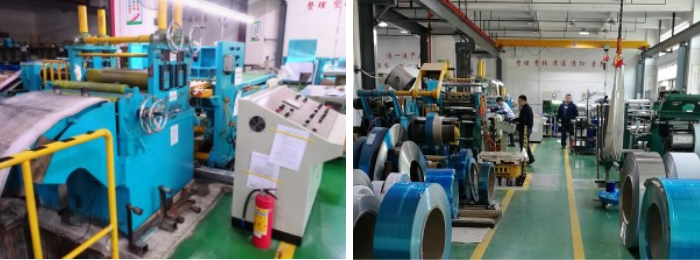How to choose stainless steel
There are three main factors affecting stainless steel corrosion below:
1. The content of alloying elements, generally speaking, the content of chromium in 10.5% steel will not rust easily.
The higher the content of chromium and nickel, the better the corrosion resistance. For example,
the content of nickel in 304 material is 8-10%, and the content of chromium reaches 18-20%.
Such stainless steel will not rust under normal circumstances.
| Grade | Si | Fe | Cu | Mn | Mg | Cr | Zn | Ti | Standard |
| 1070 | 0.2 | 0.25 | 0.04 | 0.03 | 0.03 | / | 0.04 | 0.03 | EN/ASTM |
| 3003 | 0.6 | 0.7 | 0.05-0.2 | 1.0-1.5 | / | / | 0.10 | / | EN/ASTM |
| 5052 | 0.25 | 0.40 | 0.10 | 0.10 | 2.2-2.8 | 0.15-0.35 | 0.10 | 0.10 | EN/ASTM |
2. The smelting process of the manufacturer will also affect the corrosion resistance of stainless steel.
A large stainless steel plant with good smelting technology,
advanced equipment and advanced technology can guarantee the control of alloying elements,
the removal of impurities, and the control of the cooling temperature of the billet,
so the product quality is stable and reliable, the internal quality is good, and it is not easy to rust. On the contrary,
some small steel mills have backward equipment and technology. During the smelting process,
impurities cannot be removed, and the products produced will inevitably rust.
3. The external environment, a dry and ventilated environment is not easy to rust. However,
the air humidity is high, continuous rainy weather, or the environment with high pH in the air is easy to rust.
304 stainless steel, if the surrounding environment is too bad, it will rust.
Many customers go to the market to buy stainless steel and bring a small magnet with them.
Without magnetism, there will be no rust. In fact, this is a wrong understanding.
The non-magnetic stainless steel strip is determined by the structure of the structure.
During the solidification process, the molten steel will form “ferrite”, “austenite”,
“martensite” and other stainless steels with different structures. Among them,
“ferrite” “Body” and “Martensitic” stainless steels are all magnetic.
“Austenitic” stainless steel has good overall mechanical properties,
process performance and weldability, but only in terms of corrosion resistance,
magnetic “ferritic” stainless steel is stronger than “austenitic” stainless steel.
At present, the so-called 200 series and 300 series stainless steels with high
manganese content and low nickel content in the market are not magnetic,
but their performance is very different from that of 304 with high nickel content. Instead,
304 has been stretched, annealed, polished, and casted. Process treatment will also be micro-magnetic,
so it is a misunderstanding and unscientific to judge the quality of stainless steel without magnetism.

